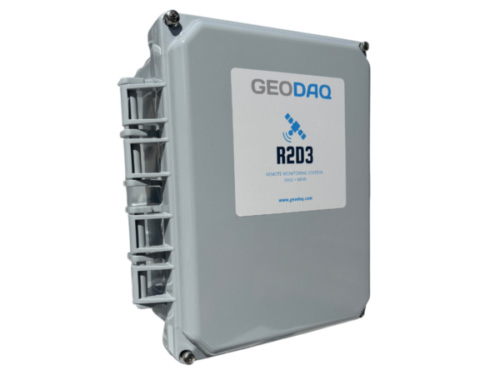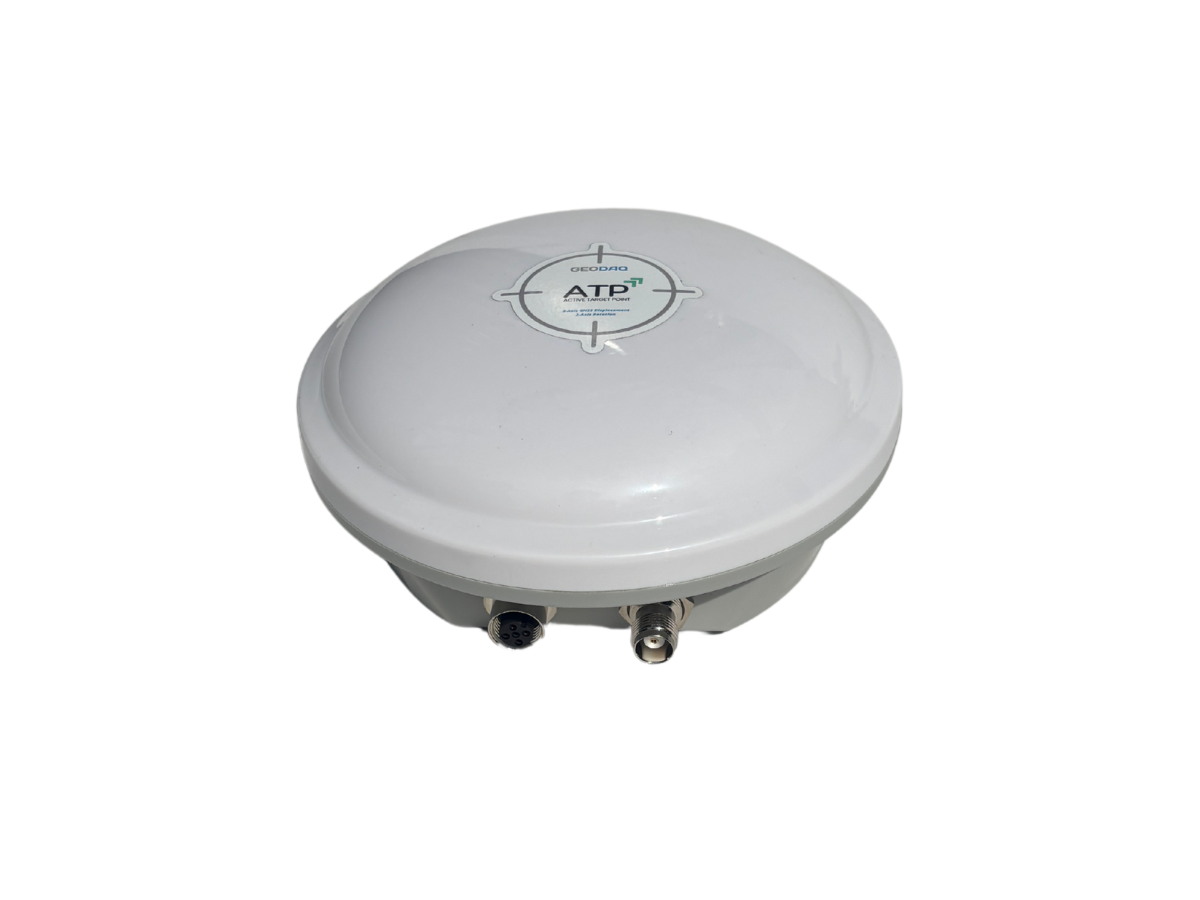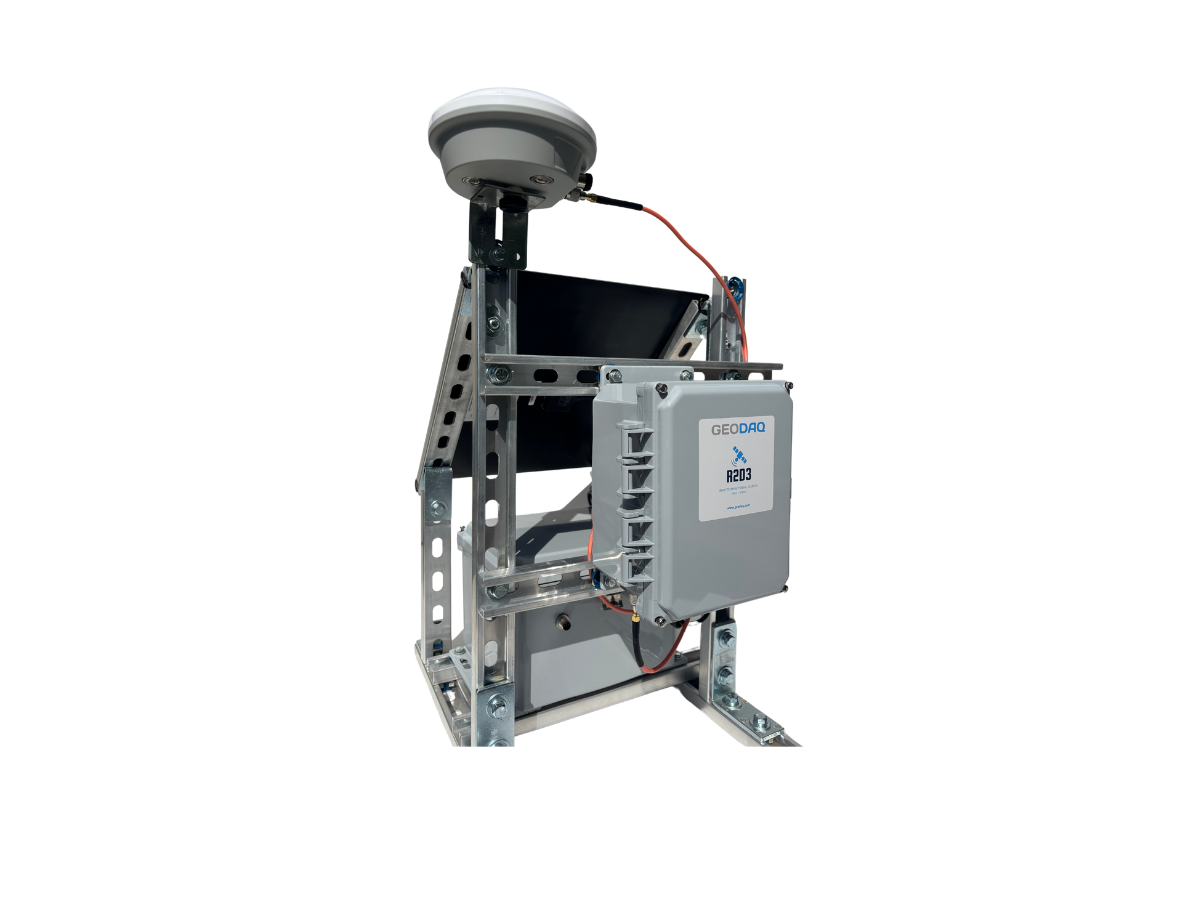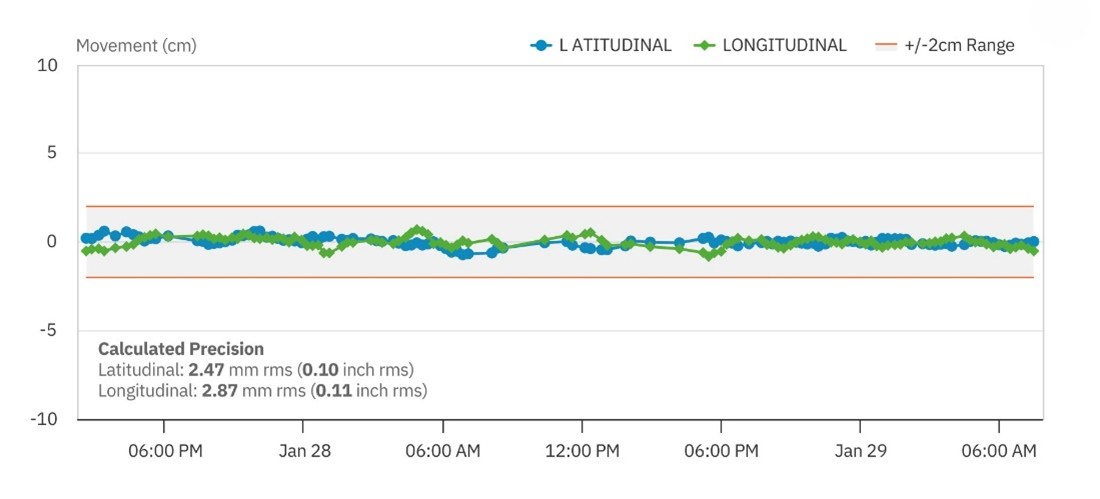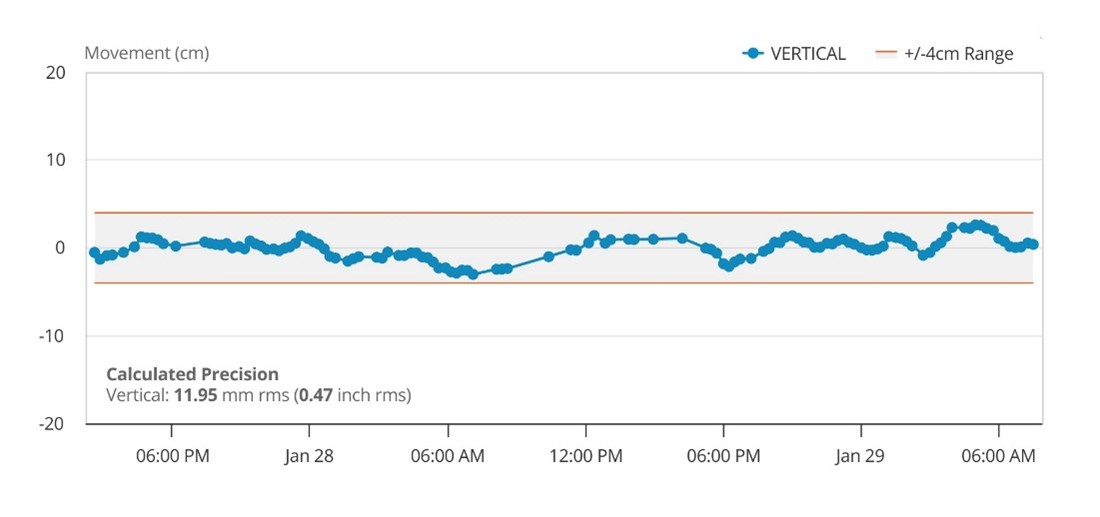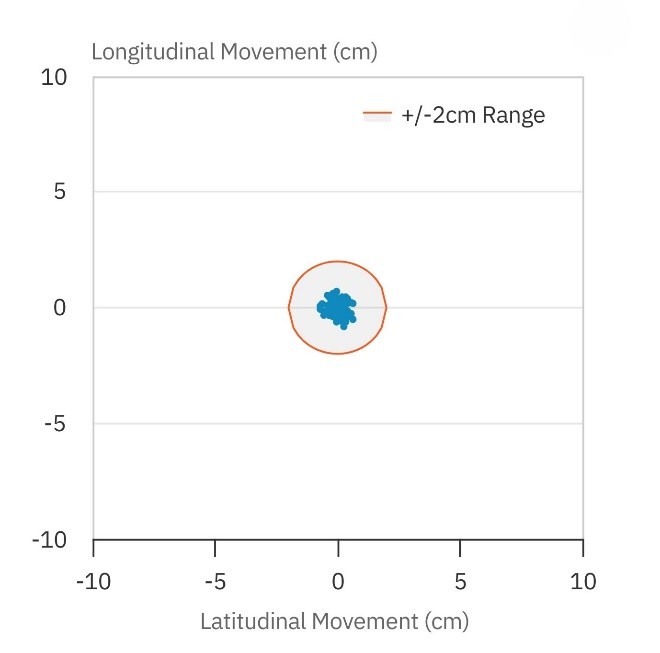Overview
Identify Movement and Reduce Risk
The R2D3 remote monitoring station measures absolute displacements in 3 directions (XYZ) as well as rotational movements in 2 horizontal directions. Millimeter-level displacement precision is achieved using streaming GNSS correction data and R2D3 software algorithms operating in a feedback loop. A two-axis high-performance tilt sensor measures rotational movements below 0.005 degrees.
Monitor displacement and rotation in 3 dimensions (XYZ) in real-time with the GNSS based R2D3 station running on our powerful new GCM8 controller module with integrated WIFI and 4G LTE cellular communication. Externally mounted Active Target Points (ATP) provide a low-cost alternative when multiple monitoring points are needed. The GCM8 includes multi-channel high-speed data acquisition for external vibrating wire and analog sensors. Monitor seismic motion, ground water pressure, stress-strain, force, vibrations and distances. Applications include landslides, earth retaining structures, cut slopes, embankments/levees, pipelines and existing structures.
| MODEL | DESCRIPTION |
| R2D3-1 | Monitoring station with one externally mounted ATP module |
| R2D3-4 | Monitoring station with 1 to 4 externally mounted ATP modules |
| R2D3-8 | Monitoring station with 1 to 8 externally mounted ATP modules |
| R2D3-X-VW | Monitoring station with X ATP and 16 vibrating wire inputs |
Multiple Monitoring Points
One R2D3 station can network up to 8 externally mounted low-cost ATP nodes (Active Target Points) adding multiple precision measurement points to each station which greatly expands the coverage area. This allows one R2D3 station to track movements with millimeter-level accuracy at up to 8 ATP locations significantly lowering cost per monitoring point. The R2D3-1 station has one internally mounted ATP and can be installed in locations where running cable is cost prohibitive. The R2D3-4 and R2D3-8 stations multiplex several ATP locations and work well for locations where running cable is feasible.
Whether you are monitoring existing structures, earth retention systems, pipelines, landslides, embankments, dams, levees or cut slopes, the R2D3-4 or -8 can cover up to 8 monitoring points spread out over long linear features or star-type configurations. Installation of each ATP above the ground surface is recommended whenever possible because it improves signal reception, but it is not required.
Performance Results
Horizontal and Vertical Movement
One R2D3 station can network up to 8 externally mounted low-cost ATP nodes (Active Target Points) adding multiple precision measurement points to each station which greatly expands the coverage area. This allows one R2D3 station to track movements with millimeter-level accuracy at up to 8 ATP locations significantly lowering cost per monitoring point. The R2D3-1 station has one internally mounted ATP and can be installed in locations where running cable is cost prohibitive. The R2D3-4 and R2D3-8 stations multiplex several ATP locations and work well for locations where running cable is feasible.
Directional Movement
In addition to horizontal and vertical movement trends over time, the Geodaq Web Application also presents directional movement as shown below for the same dataset described above.
Monitor Additional Sensors
The GCM8 embedded in the R2D3 has significant additional monitoring capability with 16 vibrating wire inputs and 8 static or dynamic analog voltage inputs. Each analog input channel accommodates unipolar or bi-polar inputs, variable input ranges, and sample rates up to 30,000 samples per second per channel on all 8 inputs. Add piezometers, displacement transducers, strain gauges, accelerometers, geophones or any other vibrating wire or voltage output sensor to compliment the GNSS absolute 3-dimensional translation and rotation movements.
Performance Specifications
| Parameter | Specification |
| GNSS Constellations | GPS, Galileo, GLONASS, Bidou plus SBAS and QZSS satellites |
| Frequencies | GPS L1/L2; GLONASS L1/L2; BEIDOU B1/B2; GALILEO E1/E5; QZSS L1/L2 |
| Cellular | Global Cellular Coverage and Carrier Agnostic |
| ATP Capacity | 8 external ATP inputs (1 to 8 differential GNSS measurement points) |
| Horizontal Precision1 | 3 mm rms with differential gnss correction service |
| Vertical Precision1 | 12 mm rms with differential correction service |
| Rotation Direction | 3-Axis XYZ directions |
| Rotation Resolution | +/- 0.005 degrees |
| Rotation Range | +/- 90 degrees each axis |
| Vibrating Wire Sensor Inputs (optional) | 2 banks of 8 simultaneously sampled channels (total 16 vibrating wire sensors with thermistor) |
| Analog Sensor Inputs | 8 bi-polar analog inputs, 16-bit resolution, programmable gain PGA, aggregate sample rate of 500k samples per second, input overvoltage protection +/- 20V |
| Internal Health Monitoring | Supply voltage, current draw, temperature and humidity |
| Sample Interval | 5 minutes to 24 hours |
| Power | 10V to 14V DC unregulated supply |
| Environmental | Polycarbonate NEMA 4X IP66 |
| Operating Temperature | -40 to +85 degrees Celsius |
| R2D3 Dimensions | 6 inches x 8 inches x 4 inches or 10 inches x 8 inches x 6 inches |
| ATP Dimesnions | 6 inch diameter and 2.7 inch height |
Accuracy and precision based on measurements with partial clear sky view and low ionospheric index

